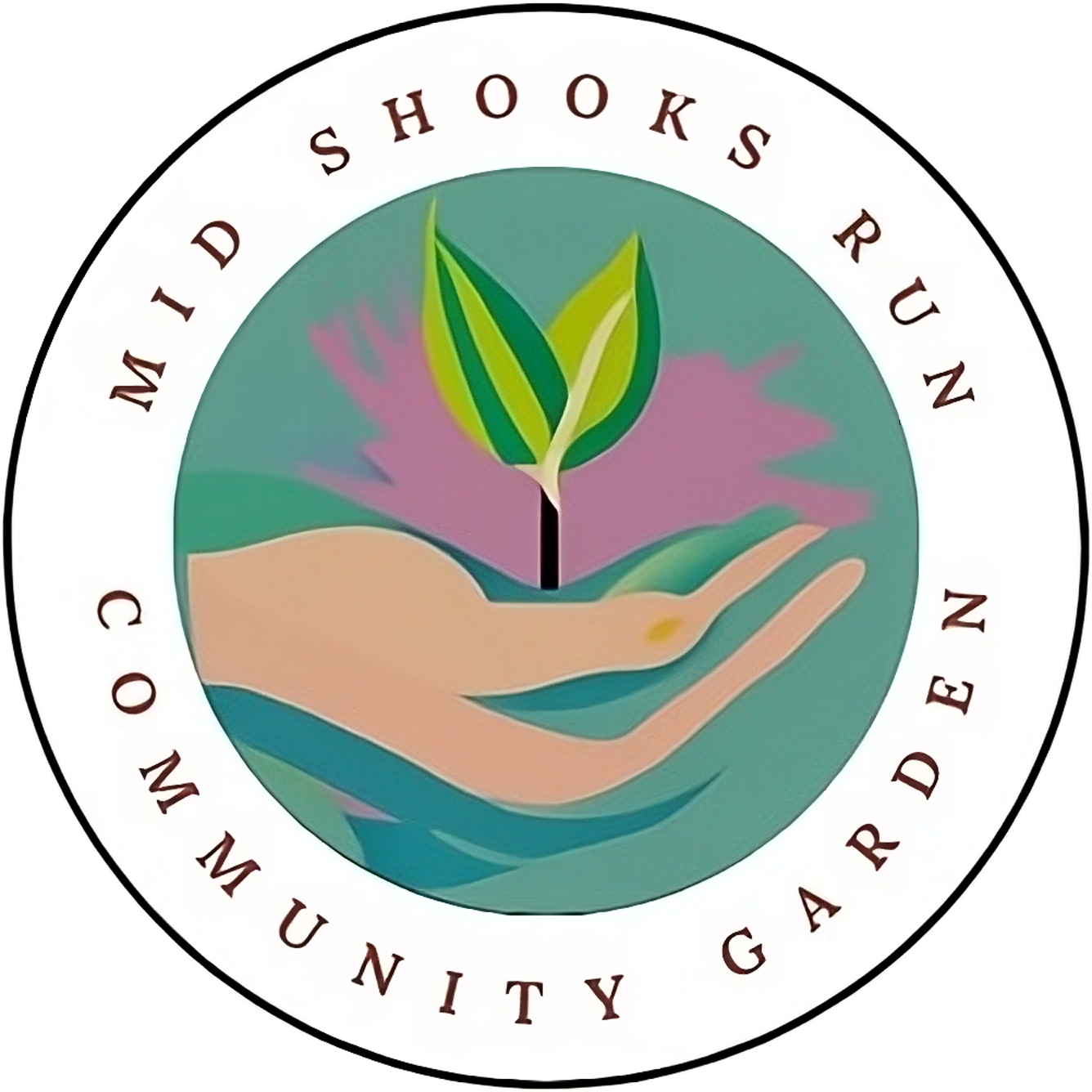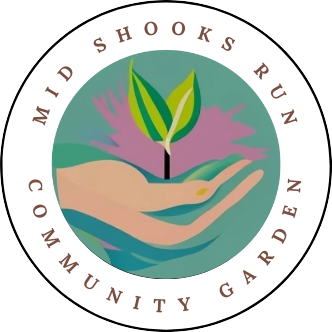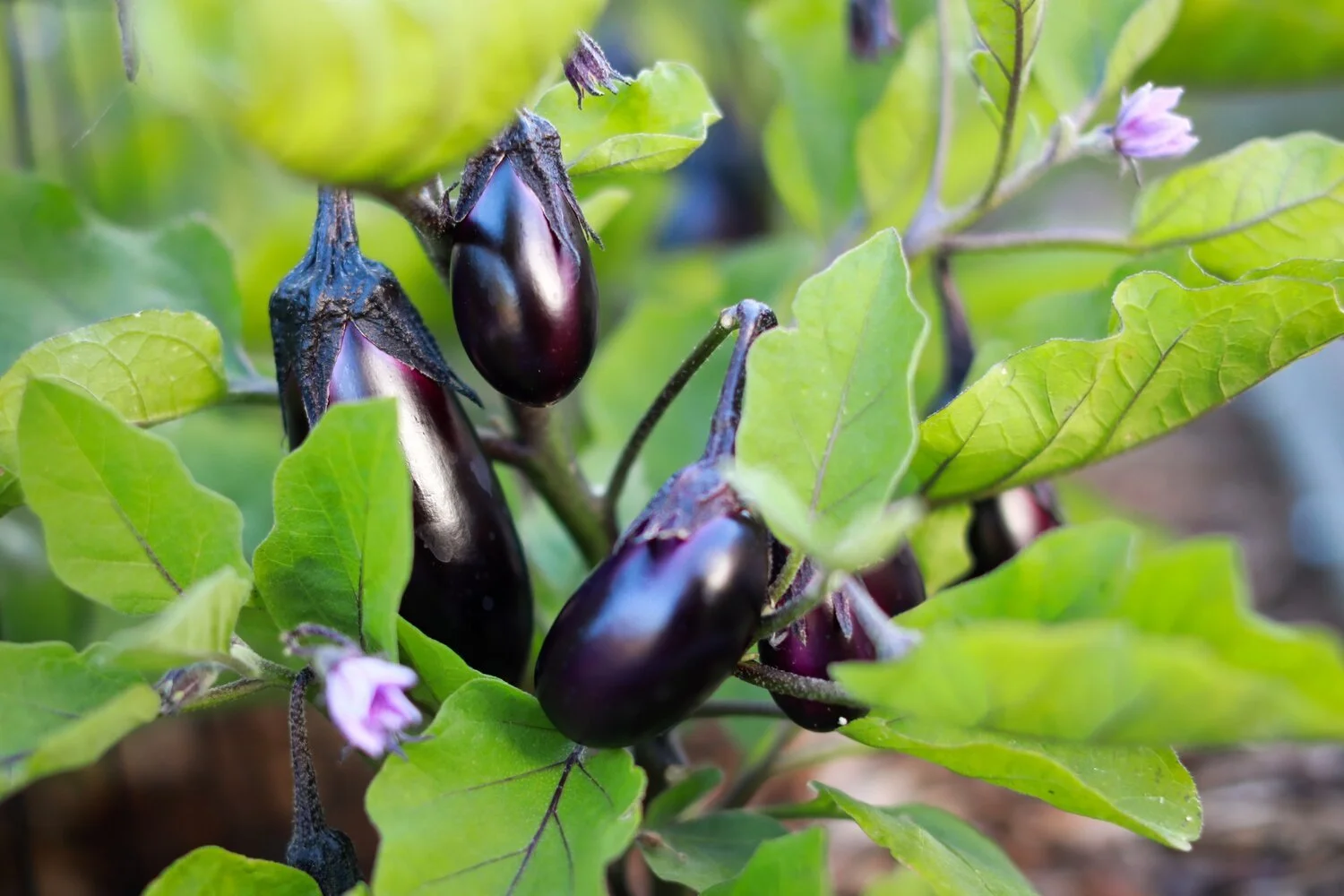Harvesting August: Garden Fresh News
July Recap

























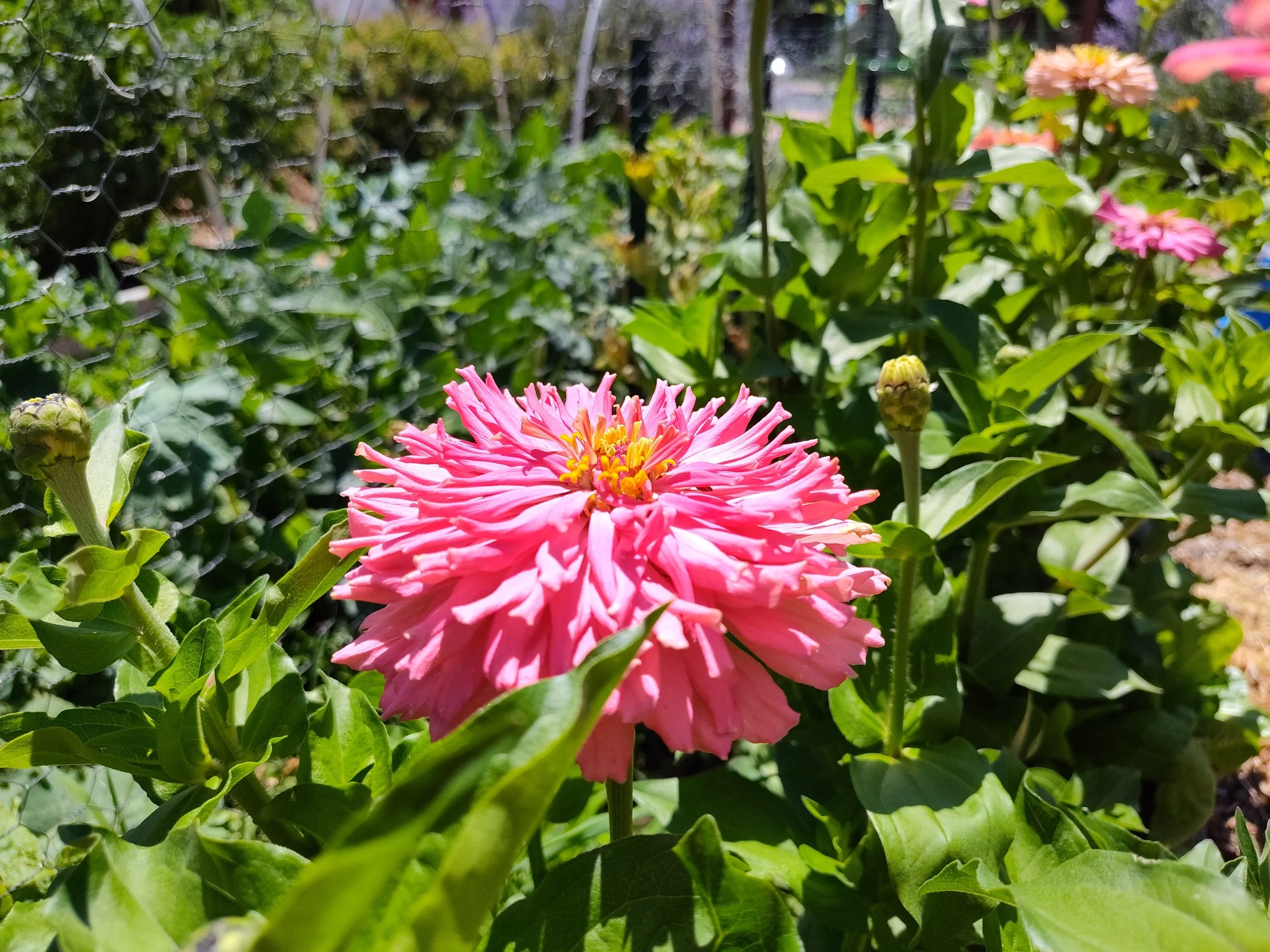









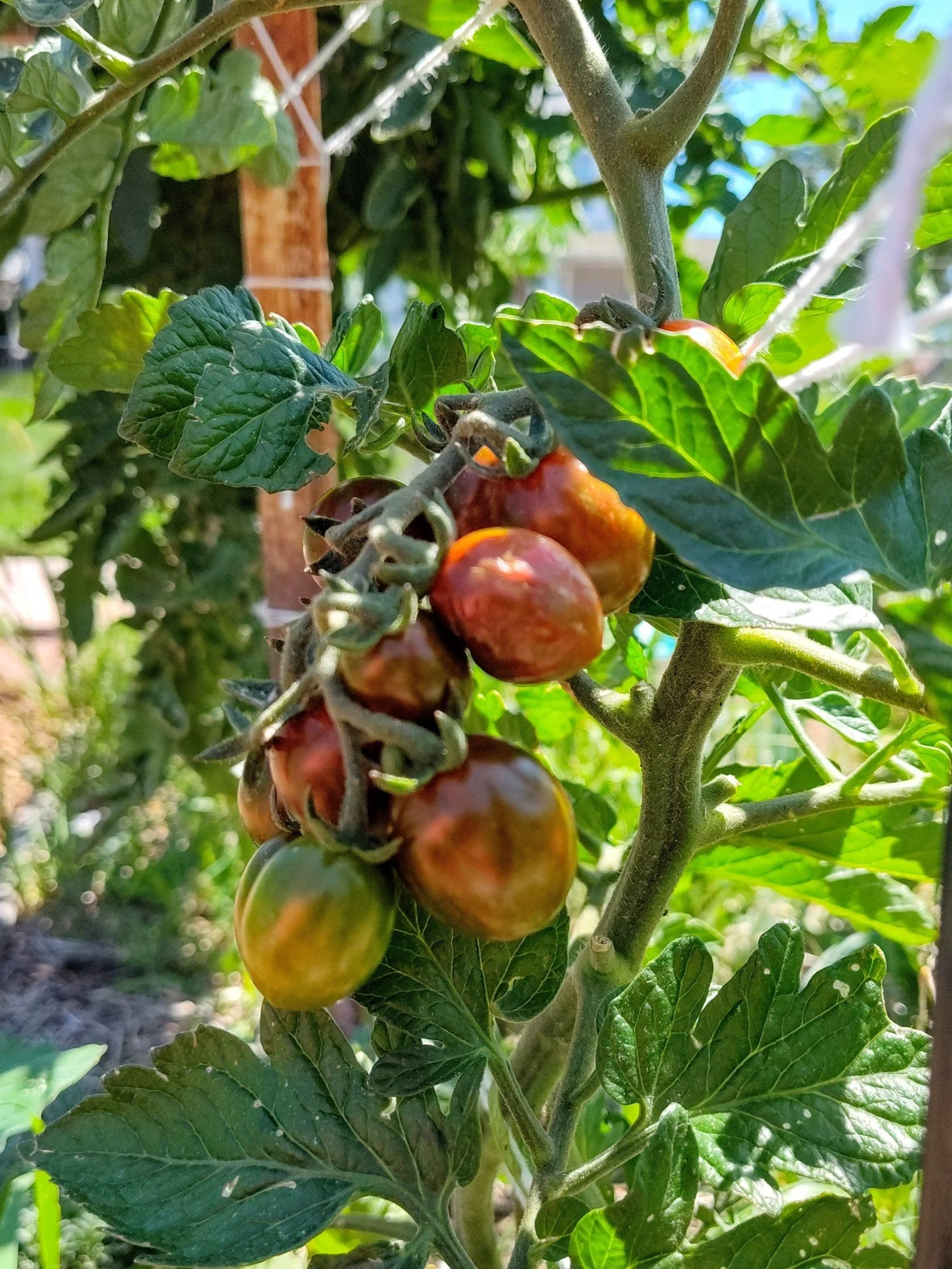










Mid Shooks Run Community Garden had a vibrant July!
Plots were bustling with pollinators and produce. The fair weather (and a shade tent!) allowed us to hold our first potluck at the picnic tables, and we represented the garden and supported our community at MSRNA’s annual Summerfest festival. At our July maintenance event, we continued our mulching and cardboarding project, installed a birdbath, and released black eastern swallowtail butterflies that we raised from eggs found in the garden!
August Events At A Glance
Garden Potluck Celebration
Wednesday, August 7, 2024, 5:00 PM - 7:30 PM
Community Constellations at Stellina Pizza Cafe
Thursday, August 22, 2024, 5:00 PM 8:00 PM
Monthly Maintenance
Saturday, August 31, 2024, 10 AM - 1 PM
Ready for Harvest at the Perennial Beds
At Mid Shooks Run Community Garden, there’s something exciting coming into season every month! Here’s what you’ll find ready to harvest in August in our perennial beds:
Chokeberries. These small, round fruits are typically deep red to purple-black in color and have a tannic flavor profile, which gives them a slightly bitter taste. When ripe, chokeberries are plump and juicy, resembling small cherries or blueberries. These berries are ready for harvesting in late summer to early fall, usually around August to September. If you’ve never seen a chokeberry before, look for a chokeberry bush in the west perennial bed, just north of our rhubarb patch.
A variety of flowers. These hardy perennials provide a colorful display while attracting beneficial pollinators to the garden.
Herbs like thyme, marjoram, lavender, lemon balm, tarragon, and sage are flourishing, ready to be harvested for culinary and aromatic purposes. Check out plot DD, which community gardeners can help themselves to!
Lemon cucumbers. You'll know it's time to harvest when they’re about the size of a lemon and turn from green to yellow. Don't let them turn a deep yellow or they'll be overripe and have a bitter taste. You’ll find them in the northern end of the perennial beds in the corrugated metal raised bed.
Mexican sour gherkins (AKA cucamelons). These super adorable fruits look like mini watermelons! Harvest when they are about the size of a large grape but still firm to touch by twisting or cutting the fruits from the vine. Be careful not to damage the plants! You’ll find them in the northern end of the perennial beds in the corrugated metal raised bed.
Tomatoes. Three Tidy Rose tomato plants are nestled alongside our winter squash. You’ll find them in the experimental beds, just south of the entrance to the community garden. These compact, indeterminates don’t need staking and will continue to produce until the first frost. Enjoy!
Walking Onions. Walking onions can be harvested throughout the season. In August, the bulbets make a great shallot substitute. You can also harvest the bullets to plant in the fall so that you have your own crop of walking onions next spring!
Other Announcements
Donating Produce
If you have a Grow and Give Plot or excess produce, consider donating to Food to Power! We’ll make a donation to Food to Power ever Saturday morning. If you have produce you’d like to donate to Food to Power, we have a box in the greenhouse that is designated for produce donations. Please place the produce you are donating in the greenhouse box on Saturday mornings, before 8am.
And if you do donate produce, we'd love to know about it! Send our org box a blurb about what you're donating (and even better, how much it weighs), and this will help us to communicate how Mid Shooks Run Community Garden serves the greater community.
Coming Soon: New Events
We’re planning more events for the late summer and fall and we’re updating our events page. Check out what’s new: a fundraising social at Stellina Pizza Cafe, a special Talks and Tastings, events from our partners at the Middle Shooks Run Neighborhood Association, a potential educational events, and a special maintenance weekend where we expand the garden footprint!
Establishment of Bindweed Mites
In early August, you’ll see a dedicated section of field bindweed set aside to establish a bindweed mite colony. Field bindweed mites are tiny arthropods that are used as a biological control method for managing field bindweed (Convolvulus arvensis). These mites feed on the leaves and growing points of field bindweed, causing damage that can reduce the weed's vigor and ability to spread. These mites are host specific; they will not feed on any other plants or animals.
Bindweed mites are slow to spread, so it’s important to leave the colony alone this season. Please refrain from pulling out inoculated bindweed (but all other bindweed outside the colony is fair game!). Don’t worry, it will be very obvious where the colony is placed - the very north end of the west perennial beds, just past the rhubarb and around the chokeberry bush will have caution tape around it and a “do not weed” sign. Once the colony is established, we’ll move portions of damaged plants to other patches of bindweed to create more colonies.
These mites will reduce growth, flowering, and can kill individual bindweed plants over time, but will probably never eradicate it. If done correctly, we expect to see a ~60% reduction in bindweed at the community garden in three years.
Burn Notice: Know Your Noxious Weeds
Noxious weeds are plants that are legally designated as harmful to public health, agriculture, recreation, wildlife, or property. Kill them on site! We have two weed species that are noxious to Colorado that regularly make an appearance at the community garden:
Field Bindweed
Bindweed is considered one of the most noxious weeds in the world because it can be difficult to control.
Bindweed can create extensive root systems up to several yards below the ground. Repetitive digging and pulling every two to three weeks throughout the growing season will ultimately deplete the root system and provide control.
Absolutely don’t let it go to seed, and remove as much of the root system as possible when found. Any root portions left in the soil will re-sprout in about two weeks, so be sure to dispose of bindweed in the trash (not our compost!) and be prepared to weed the same area every three weeks.
Siberian Elm
Several traits make Siberian elms (Ulmus pumila) one of the most despicable invasive tree species around. A hardy, fast growing, prolific, mid-sized, deciduous tree / shrub, the Siberian Elm has few redeeming qualities.
Siberian elms outcompete other, more desirable species, uproot walls around yards, don’t age well (branch breakage is common), and exacerbate allergies too. The leaves look like a little, serrated mint leaves, about 1.5" to 2" long, symmetrical and cat's-eye shaped. It often has a taproot that’s longer than the above-ground parts. They produce a ton of seeds each spring that fly around, sprout up everywhere, and unless you get them that first season, they are very hard to pull.
If you see one (there’s probably many!) uproot it on sight! Siberian elms are banned in Colorado Springs.
